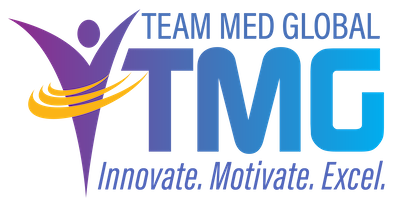 The rapid growth of telehealth and specialty practices, such as behavioral health and advanced outpatient services, has transformed the healthcare landscape. For Provider Lifecycle Professionals (PLPs), these emerging care models bring unique challenges to provider enrollment. To meet these demands, PLPs must adapt their strategies to ensure providers are enrolled efficiently and compliant with regulatory and payer-specific requirements.
The rapid growth of telehealth and specialty practices, such as behavioral health and advanced outpatient services, has transformed the healthcare landscape. For Provider Lifecycle Professionals (PLPs), these emerging care models bring unique challenges to provider enrollment. To meet these demands, PLPs must adapt their strategies to ensure providers are enrolled efficiently and compliant with regulatory and payer-specific requirements.
The Growth of Specialty Practices and Telehealth
Telehealth utilization surged during the COVID-19 pandemic, and its benefits—convenience, accessibility, and cost-effectiveness—have ensured its continued integration into healthcare delivery. Similarly, specialty practices, including behavioral health, orthopedics, and oncology, are seeing increased demand. However, these fields often involve intricate payer requirements and regulatory considerations that can complicate enrollment processes.
The PLP’s Role: PLPs serve as the linchpin for operationalizing these care models by ensuring that providers meet licensing, credentialing, and payer-specific standards. The complexity of these processes requires innovative solutions to streamline enrollment without compromising on compliance or quality.
Challenges in Enrolling Providers for Telehealth and Specialty Practices
Navigating State Licensure and Cross-State Practice: Telehealth providers frequently serve patients across state lines, necessitating compliance with multiple state licensing boards.
Behavioral Health Impact: Behavioral health providers are increasingly sought for telehealth services, adding to the licensure burden as patient demand spans broader geographic regions.
Understanding Payer-Specific Requirements: Specialty practices often face detailed criteria from payers, such as additional documentation for behavioral health providers or unique enrollment procedures for telehealth reimbursement.
Key Challenge: Ensuring that payers recognize telehealth providers as in-network and verifying that service codes align with the care provided.
Adapting to Rapid Regulatory Changes: Regulations around telehealth reimbursement, especially for Medicaid and Medicare, have evolved rapidly. Keeping up with these changes is critical to maintaining enrollment accuracy.
Strategies for Optimizing Provider Enrollment
Leverage Credentialing and Enrollment Technology
Why It Works: Automated credentialing platforms streamline workflows by consolidating licensure verification, payer enrollment, and compliance tracking.
How PLPs Benefit: Technology can help identify state-specific licensing gaps and flag incomplete payer requirements before they cause delays.
Develop a Multi-State Licensing Protocol
Why It Works: Establishing a clear process for tracking licensing requirements and expiration dates across states minimizes bottlenecks for telehealth providers.
Pro Tip: Leverage tools like the Interstate Medical Licensure Compact (IMLC) for eligible providers to expedite cross-state licensing.
Stay Ahead of Regulatory Updates
Why It Works: Monitoring changes in telehealth and specialty practice regulations ensures compliance and avoids denied claims.
Action Step: Partner with payer representatives to clarify their evolving telehealth enrollment criteria and document changes for internal teams.
Create Specialty-Specific Enrollment Checklists
Why It Works: Tailoring enrollment workflows to the unique needs of specialty practices, such as oncology or behavioral health, ensures nothing is overlooked.
Example: Behavioral health providers often require additional documentation for credentialing, such as clinical supervision records or board certifications.
Engage in Ongoing Collaboration with Providers
Why It Works: Open communication helps identify enrollment barriers early, reducing frustration for providers and improving overall efficiency.
Best Practice: Conduct regular check-ins with providers to update them on the status of their enrollment and address their concerns.
The Future of Enrollment for Telehealth and Specialty Practices
As telehealth and specialty practices continue to grow, PLPs have an opportunity to drive innovation and efficiency in provider enrollment. By addressing challenges head-on and adopting proactive strategies, PLPs can ensure that their organizations remain compliant, competitive, and ready to meet patient needs.
Optimizing provider enrollment isn’t just about meeting today’s demands—it’s about building a framework that supports the future of healthcare delivery.
